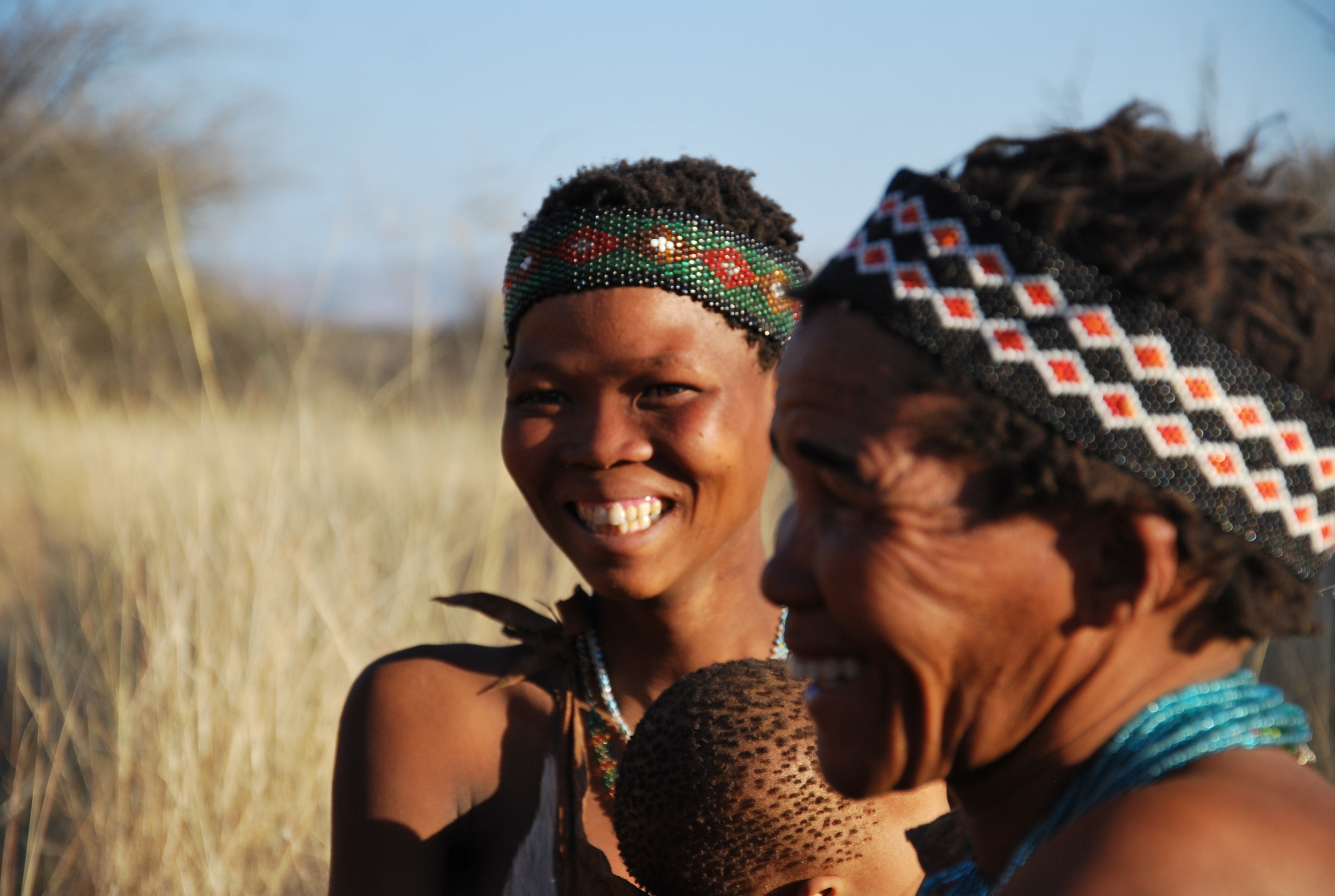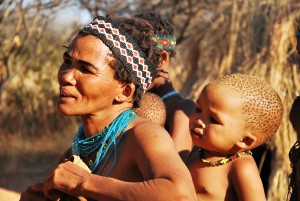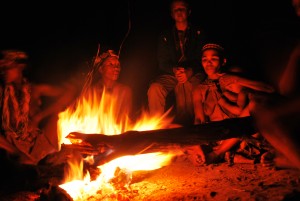N/a’ankuse Wildlife Sanctuary Namibia: Lazy Leopards, Charging Lions & Incredible People
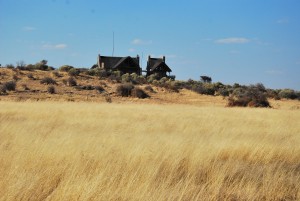 Just outside the capital city of Windhoek in Namibia, lies N/a’an ku se Wildlife Sanctuary where co-founder Marlice van Vuuren works hard to provide refuge to injured or rescued animals. Guests stay in spacious villas tucked into the grassy plains and are treated to first class food and relaxation.
Just outside the capital city of Windhoek in Namibia, lies N/a’an ku se Wildlife Sanctuary where co-founder Marlice van Vuuren works hard to provide refuge to injured or rescued animals. Guests stay in spacious villas tucked into the grassy plains and are treated to first class food and relaxation.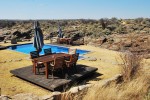
 On the day we are to meet Marlice, she is called away on urgent business…a farmer has caught to cheetahs (one of Africa’s most endangered animals) and rather than shoot them (they are considered a pest as they attack livestock), he has called Marlice to come pick them up. This is about how things started for her. Now, she protects animals like lions, leopards, cheetahs, wild dogs, caracals and baboons. on about 8,000 acres. While she believes wild animals should stay wild, she says the preserve is for animals that cannot be rehabilitated due to human contact or injuries.
On the day we are to meet Marlice, she is called away on urgent business…a farmer has caught to cheetahs (one of Africa’s most endangered animals) and rather than shoot them (they are considered a pest as they attack livestock), he has called Marlice to come pick them up. This is about how things started for her. Now, she protects animals like lions, leopards, cheetahs, wild dogs, caracals and baboons. on about 8,000 acres. While she believes wild animals should stay wild, she says the preserve is for animals that cannot be rehabilitated due to human contact or injuries.
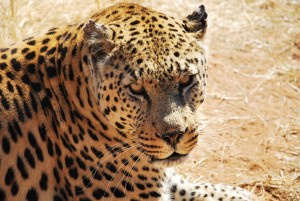 So we head out in one of the center’s jeeps to accompany a staff member for an afternoon feeding. First, we stroll past the baboons who leap and run, swing and shriek at us. He says they are funny creatures, but can get aggressive. Next, we walk through the caracal cage. A caracal is a small African cat with big feathery tufts of fur protruding from its ears. One of the cats is in heat, so neither of them take much notice of us. The kids think its really cool to be walking inside their cage! As we approach the wild dogs, they run to the fence with a warm greeting, but when they realize it’s not their feeding day, they laze back into the shade watching us from a distance. The leopards are ready for their meal, and lucky for them it’s feeding day. Our guide lets the kids throw the meat into the cage and the leopards stroll up, look at us, pick up the meat and go lay in the shade to munch it.
So we head out in one of the center’s jeeps to accompany a staff member for an afternoon feeding. First, we stroll past the baboons who leap and run, swing and shriek at us. He says they are funny creatures, but can get aggressive. Next, we walk through the caracal cage. A caracal is a small African cat with big feathery tufts of fur protruding from its ears. One of the cats is in heat, so neither of them take much notice of us. The kids think its really cool to be walking inside their cage! As we approach the wild dogs, they run to the fence with a warm greeting, but when they realize it’s not their feeding day, they laze back into the shade watching us from a distance. The leopards are ready for their meal, and lucky for them it’s feeding day. Our guide lets the kids throw the meat into the cage and the leopards stroll up, look at us, pick up the meat and go lay in the shade to munch it.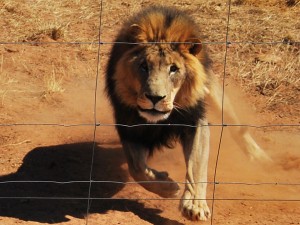
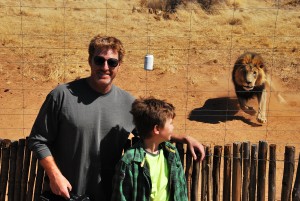 The most memorable animal we visit is the lion. They too are mating (an act we actually get to see as we walk up), but in this case our presence is a threat to the male. He has no interest in the food, only in the lioness. He charges the fence (a very thin wire fence) to scare us off. He doesn’t want any competition for his lady! We move on, awarding him his privacy…our hearts racing from the charge. Nathan remarks: “The safari guides always say that if a lion charges you, you shouldn’t run, but now I know it’s impossible. Even knowing the fence was there, my instincts screamed ‘Run!'”
The most memorable animal we visit is the lion. They too are mating (an act we actually get to see as we walk up), but in this case our presence is a threat to the male. He has no interest in the food, only in the lioness. He charges the fence (a very thin wire fence) to scare us off. He doesn’t want any competition for his lady! We move on, awarding him his privacy…our hearts racing from the charge. Nathan remarks: “The safari guides always say that if a lion charges you, you shouldn’t run, but now I know it’s impossible. Even knowing the fence was there, my instincts screamed ‘Run!'”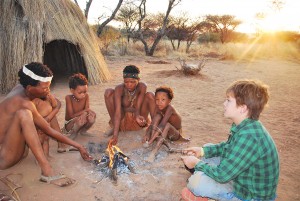
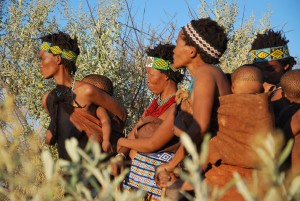 Later that evening, after enjoying the broad porches and living areas of our villa at N/a’an ku se, we head out into the bush to meet the San Bushmen and learn some of their customs. In addition to protecting animals, Marlice wants to protect the traditions of the local tribes and teach them the importance of the animals for tourism. So, she invites some of the villagers to live on her property and share their lifestyle with the visitors. She also runs a school for the San Bushmen children. We meet a group of about ten San people, mostly older men and women and babies. She says the younger men and women have to stay in the village (which is about 200 miles away) and work the land.
Later that evening, after enjoying the broad porches and living areas of our villa at N/a’an ku se, we head out into the bush to meet the San Bushmen and learn some of their customs. In addition to protecting animals, Marlice wants to protect the traditions of the local tribes and teach them the importance of the animals for tourism. So, she invites some of the villagers to live on her property and share their lifestyle with the visitors. She also runs a school for the San Bushmen children. We meet a group of about ten San people, mostly older men and women and babies. She says the younger men and women have to stay in the village (which is about 200 miles away) and work the land. 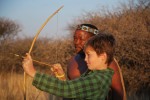 The men teach the kids to hunt and about all the plants around, which they use for medicinal purposes, houses, tools and more. Later than evening, the men tell stories around a campfire and dance while the women sing.
The men teach the kids to hunt and about all the plants around, which they use for medicinal purposes, houses, tools and more. Later than evening, the men tell stories around a campfire and dance while the women sing.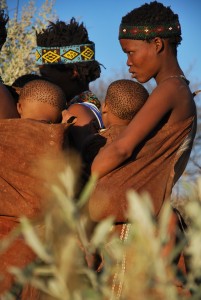
Looking up through the black night at the twinkling stars, listening to the beautiful voices of the San women and the distant roar of the lion (I think he finally got his lady), I can feel the spirit of the ancestors floating by in the smoke of the campfire and feel so blessed for my family to experience this together.
Resources:
For more information on Namibia, visit Namibia Tourism Board
N/a’an ku se Wildlife Sanctuary
on Twitter
on Facebook
on Google+







